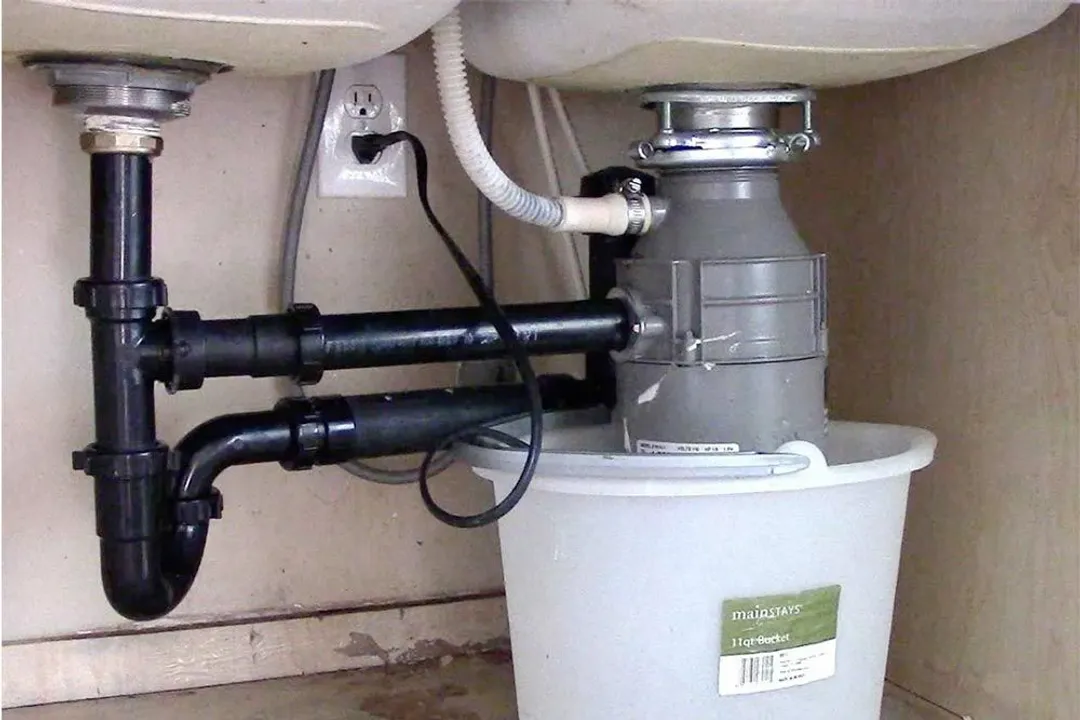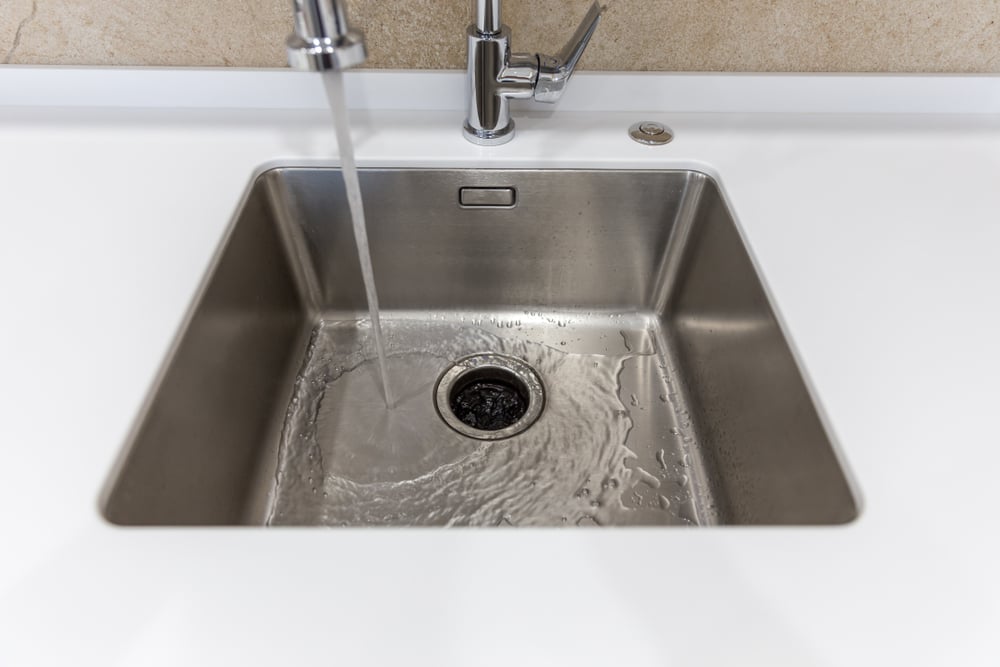My Guide to Resolving a Leak in Your Garbage Disposal
My Guide to Resolving a Leak in Your Garbage Disposal
Blog Article
Presented here down the page you can discover lots of incredibly good guidance relating to Why Is .

Waste disposal unit are essential kitchen area devices that aid in throwing away food waste successfully. However, a leaking garbage disposal can be a discouraging and messy trouble to handle. Thankfully, many leakages can be repaired conveniently with a couple of simple steps. In this article, we will discuss how to fix a leaking waste disposal unit successfully.
Introduction
Garbage disposals are installed under kitchen sinks and are made to shred food waste right into smaller pieces, permitting it to travel through the plumbing system easily. While these tools are normally reputable, leaks can take place gradually due to damage, loose links, or damages to the unit.
Step-by-Step Overview to Fixing a Dripping Garbage Disposal
Turn Off the Power
Prior to attempting any type of repairs, make sure that the power to the waste disposal unit system is switched off to prevent the danger of electrical shock.
Locate the Leak
Identify the precise area of the leakage and identify the reason
Tighten up Links
Use a wrench to tighten any type of loosened links between the disposal system and the pipes system.
Change Seals or Gaskets
If the leakage results from worn seals or gaskets, remove the old components and replace them with new ones.
Patching Fractures or Holes
For fractures or openings in the disposal device, usage epoxy or an ideal patching product to secure the broken area.
Determining the Resource of the Leakage
Before attempting to deal with a dripping waste disposal unit, it is vital to determine the source of the leak. This can normally be done with visual assessment or by carrying out basic tests.
Visual Inspection
Evaluate the waste disposal unit system thoroughly for any signs of water leak. Pay very close attention to locations around seals, gaskets, and connection points.
Checking for Leaks
One means to evaluate for leakages is by running water through the disposal device and checking for any type of noticeable indicators of leakage.
Usual Reasons For Leakages in Garbage Disposals
Worn Seals and Gaskets
Seals and gaskets play a critical role in stopping water from dripping out of the garbage disposal. Gradually, these parts can deteriorate, resulting in leakages around the disposal device.
Loose Connections
The connections between the garbage disposal and the pipes system can come to be loosened with time, causing water to leak out during operation.
Splits or Openings in the Disposal Device
Physical damages to the waste disposal unit, such as splits or openings in the housing, can additionally cause leakages.
Devices and Materials Needed for Repairing a Dripping Waste Disposal Unit
Prior to beginning the repair service process, gather the essential devices and products, including a screwdriver, adjustable wrench, plumber's putty, substitute seals or gaskets, and epoxy or patching product for fixing fractures or holes.
Examining the Waste Disposal Unit After Repair Work
As soon as the repair service is complete, examine the garbage disposal by running water via it to make sure that the leak has been dealt with.
Preventive Upkeep Tips to Prevent Future Leaks
To avoid future leakages, it is necessary to carry out routine maintenance on your waste disposal unit. This consists of keeping it tidy, staying clear of putting non-food items or hard items down the disposal, and occasionally checking for leaks or various other concerns.
Conclusion
In conclusion, repairing a dripping waste disposal unit is a reasonably uncomplicated procedure that can be finished with fundamental devices and products. By following the actions outlined in this short article and exercising preventative upkeep, you can maintain your waste disposal unit in good working problem and prevent expensive repair work in the future.
What to Do About a Leaking Garbage Disposal
A leaking garbage disposal often goes unnoticed until you confront a sopping cabinet, a foul-smelling puddle, or an audible drip-drip-drip from the unit. The fix can be frustrating, too, because the leak can stem from a number of components in the system. Fortunately, with a little sleuthing, you can zero in on the leak and—depending on the exact location—stop the icky oozing and repair the component that caused it. Worst case scenario, if it turns out that the garbage disposal must be replaced, installing a new one is a reasonable do-it-yourself task for those with basic plumbing skills. Read on to keep the cash you’d otherwise hand over to a pro.
Prepare to find the leak
Prior to testing the garbage disposal for leaks, unplug it at the wall outlet and turn off the power from the breaker box to prevent electrical shock. Then insert a watertight sink stopper into your sink drain and wipe the unit dry with a clean cloth. In any handy container, mix a few drops of food coloring into a few cups of water, and pour the dyed water onto the sink stopper to help you locate the leak.
Investigate the source
the top, where the disposal meets the sink drain the side, where the dishwasher hose or main drain pipe connects to the disposal or the bottom of the unit Inspect each of these locations while gliding a light-colored rag over the unit; the dyed water will readily show on the rag and reveal the location of the leak. If a leak isn’t immediately apparent, remove the sink stopper and pour a few more cups of dyed water down the sink drain, then check for leaks again. Leaks near the top of the unit are more likely to show themselves while the sink is plugged, while side and bottom leaks are more noticeable while the sink is unplugged.
The metal sink flange that sits directly inside the sink drain is typically sealed around the top with plumber’s putty (a clay-like sealant) and then secured from under the sink with bolts. If the plumber’s putty deteriorates, or the bolts loosen, the flange can no longer form a watertight seal between the sink drain and the disposal—which could cause a leak at the top of the unit.
To reseal the leaky flange, you must first detach the garbage disposal. Start by loosening the screws securing the main drain pipe to the disposal, then loosen the screws in the metal clamp securing the dishwasher hose to the disposal and detach the drain pipe and dishwasher hose from the disposal. Loosen the screws in the mounting ring that connects the disposal to the metal mounting assembly beneath the sink, then pull down the disposal and carefully set it on a clean, dry surface. Loosen the bolts in the mounting assembly with a wrench, then pull down the mounting assembly and set it near the disposal.

Hopefully you enjoyed our article about The Handy Guide To Fixing Your Garbage Disposal Leaking. Thanks so much for finding the time to read through our piece of content. Sharing is nice. You never know, you could be doing someone a favor. I am grateful for your time. Come back soon.
Request An Estimate Report this page